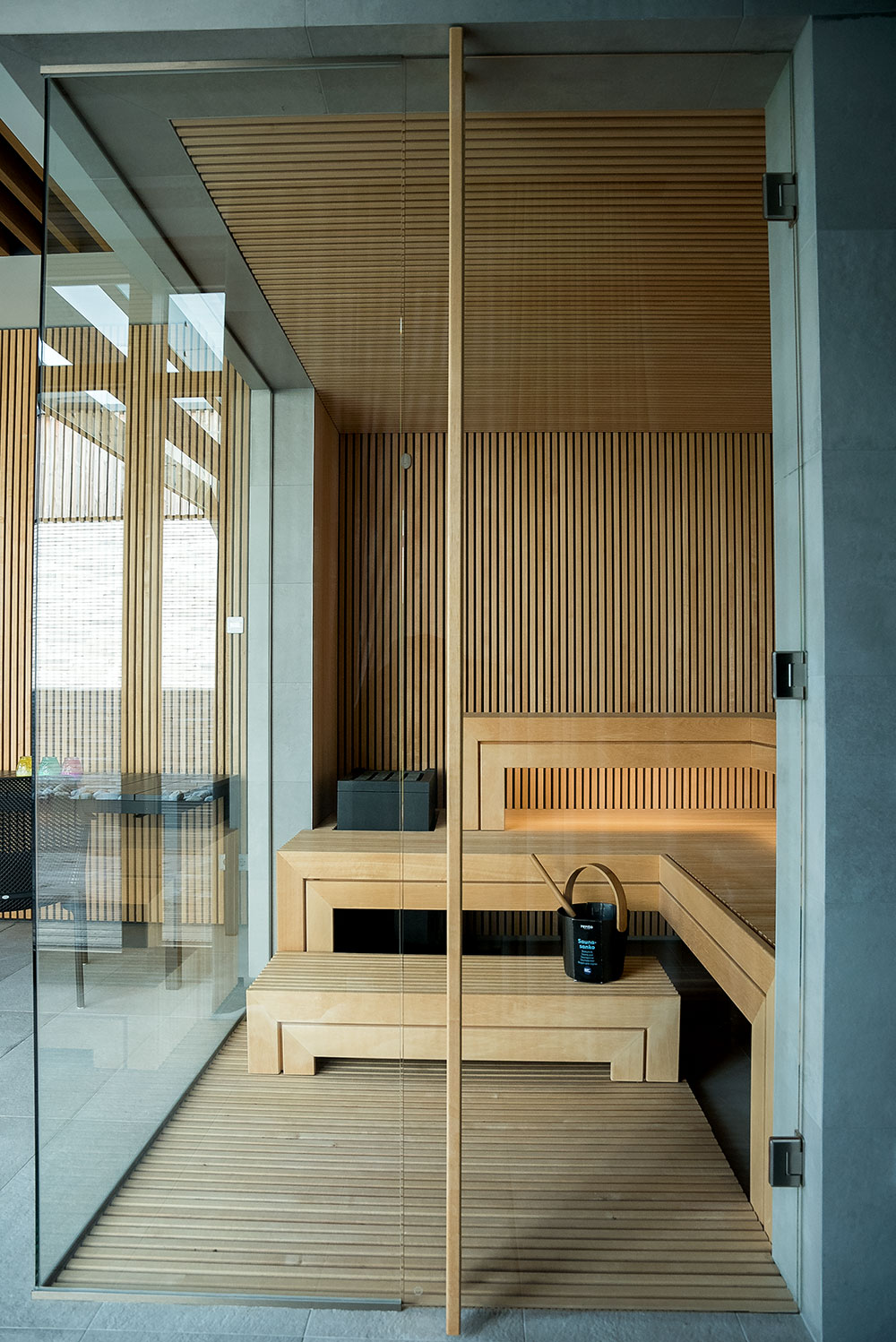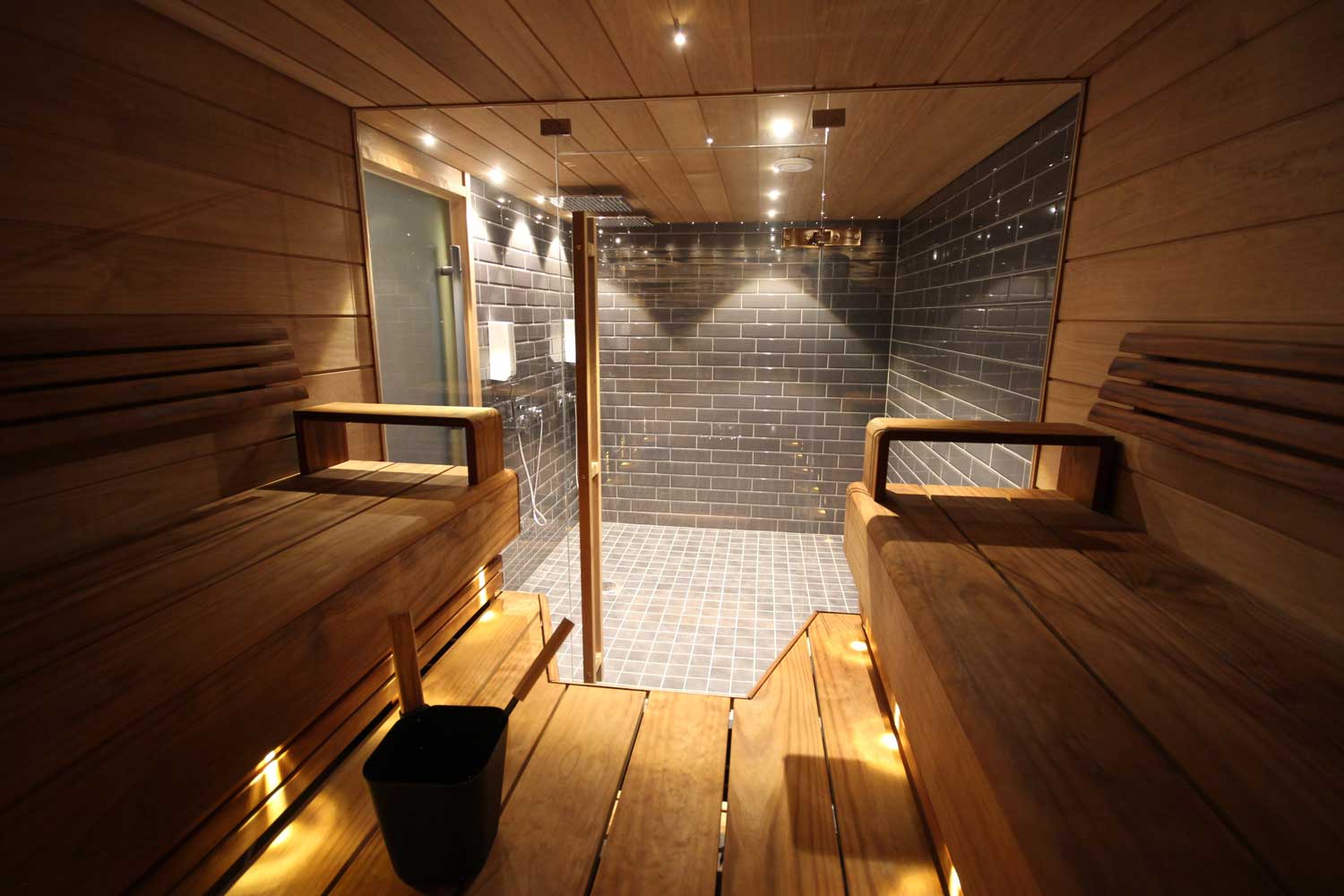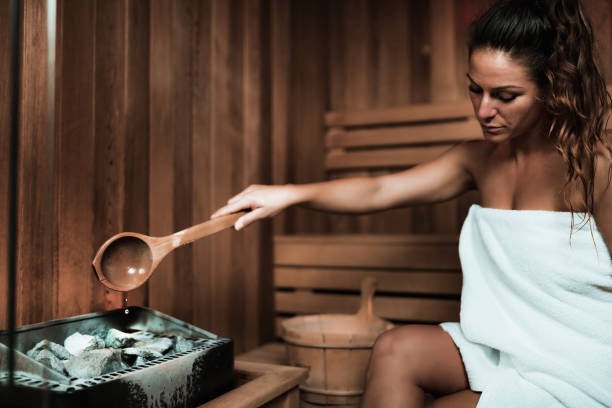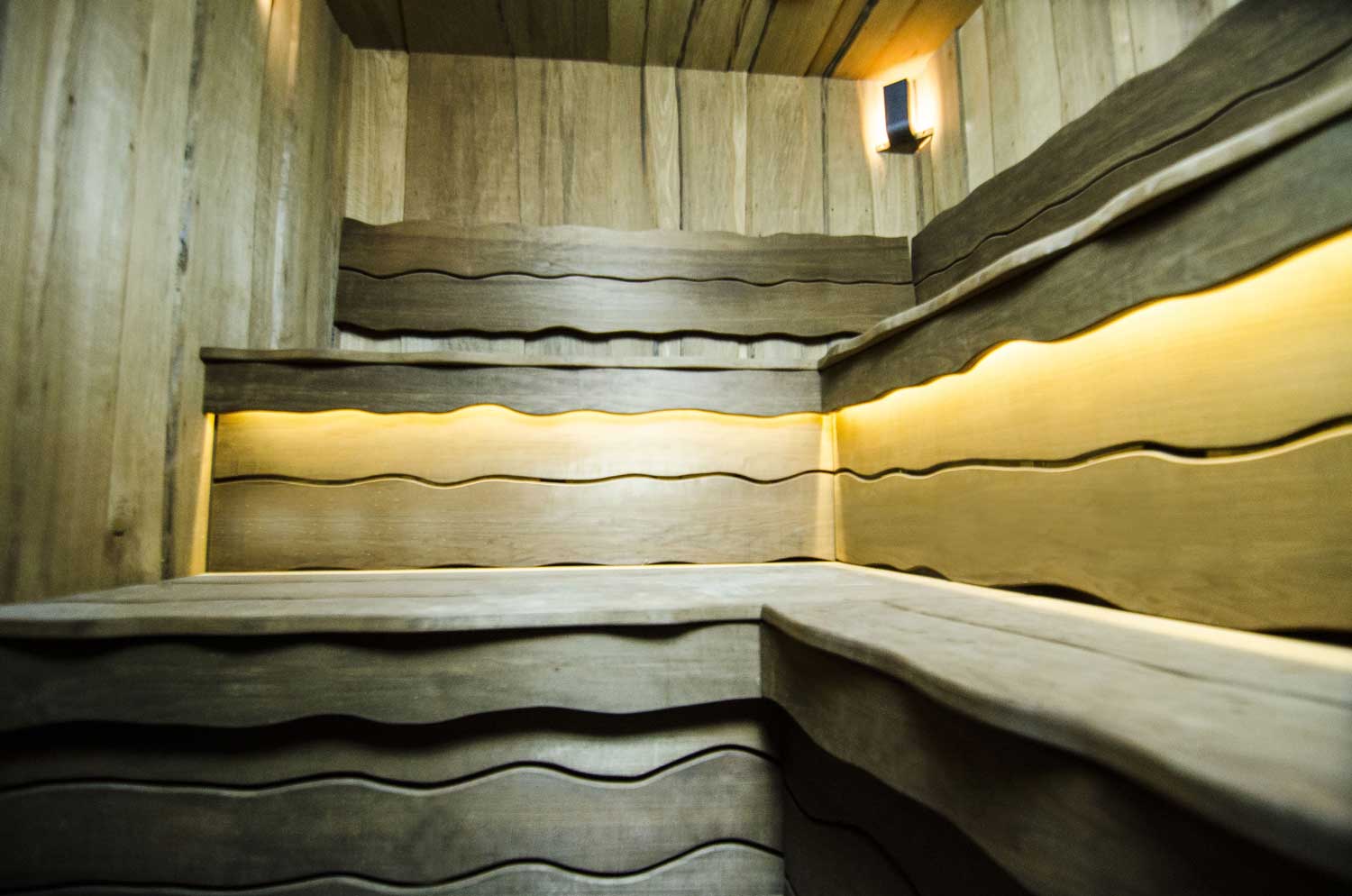Types of saunas
According to the steam extraction method and means, the sauna can be Japanese, Roman, Arabic, Turkish, Finnish (sauna), Russian steam. The differences between saunas are determined by the traditions of nations, national customs, climatic conditions and other features.
The most popular and most often installed in homes are:
• A Japanese sauna, which differs from other saunas in that it is not heated with hot air or steam, but with hot water. It is a wooden tub with special benches. The water is heated by a heater installed inside the tub and enclosed by a wooden wall. The water heats up to 45-50 degrees Celsius. Sitting in the bathtub half-lying, a cap soaked in cold water is placed on the head. This procedure is an excellent preventive measure against colds, helps with rheumatism, nervous and cardiovascular diseases, and metabolic disorders.
 • Sauna (Finnish sauna) is a dry air sauna where the air humidity is about 5-25 percent and the temperature rises to 70-110 degrees Celsius. The optimal temperature is 80-90 degrees. The heat in the sauna is regulated by pouring water on the heated stones. It is recommended to bask in it 2-3 times until maximum sweating. Before the first walk, the body is moistened in the shower, and after leaving the sauna, it is washed under a cool shower or splashed with water. The sauna is recommended for people suffering from allergies, sinusitis, arthritis, migraines, backaches. Small children, pregnant women and the elderly are advised not to abuse it.
• Sauna (Finnish sauna) is a dry air sauna where the air humidity is about 5-25 percent and the temperature rises to 70-110 degrees Celsius. The optimal temperature is 80-90 degrees. The heat in the sauna is regulated by pouring water on the heated stones. It is recommended to bask in it 2-3 times until maximum sweating. Before the first walk, the body is moistened in the shower, and after leaving the sauna, it is washed under a cool shower or splashed with water. The sauna is recommended for people suffering from allergies, sinusitis, arthritis, migraines, backaches. Small children, pregnant women and the elderly are advised not to abuse it.
• Steam bath (also called Russian) - not as hot as a sauna. The temperature reaches up to 70 degrees Celsius and the relative humidity reaches 80-100 percent. Before going to the steam bath you need to take a shower, after entering the bath for the first time stay in it for no longer than 10-15 minutes. It is recommended to enter the steam room 2-3 times. Before going to the sauna again, it is necessary to cool down well so as not to strain the heart. The low temperature and high humidity do not bother a person, but they are pleasant, warm, and encourage relaxation. It is advisable to avoid a steam bath for people without heart problems, and for people with bronchial asthma or other respiratory diseases, poor sleep, slow metabolism, and mild joint pain, such a sauna is especially recommended.
• The infrared sauna is an innovation, its effects on the body are similar to the Russian sauna. In the infrared sauna, the temperature reaches 40-65 degrees Celsius. The sauna has a toning effect on the body, does not cause drowsiness, harmful substances are removed from the deeper layers of the skin when sweating. Penetrating the skin, infrared rays warm the skin, muscles, bones, joints and other tissues from the inside, and activate blood circulation. Such a sauna is easy to install at home.
Installation of a sauna
 When planning the construction of a sauna, it is necessary to predict the size of the sauna in advance. The simplest sauna consists of an antechamber and a sauna. Undressing takes place in the anteroom, so it must be heated, have enough benches to sit on, and space to hang clothes. It is estimated that one person needs at least 1 square meter of floor space in a sauna. The heater, water barrel, benches occupy another 3-4 square meters. Thus, the size of one family sauna should be 7-8 square meters, excluding the anteroom.
When planning the construction of a sauna, it is necessary to predict the size of the sauna in advance. The simplest sauna consists of an antechamber and a sauna. Undressing takes place in the anteroom, so it must be heated, have enough benches to sit on, and space to hang clothes. It is estimated that one person needs at least 1 square meter of floor space in a sauna. The heater, water barrel, benches occupy another 3-4 square meters. Thus, the size of one family sauna should be 7-8 square meters, excluding the anteroom.
The recommended height of the sauna is at least 2 meters, because the hot steam in the lower room heats people's heads too much, and the ceiling prevents the use of sauna whisks. It is also not worth building a sauna that is too high, because it is difficult to heat a high sauna. When installing a sauna inside the house, it is necessary to insulate the floor and the corners between the floor and the walls well. It is most convenient to cover the floor with tiles, and to prevent it from being cold and slippery, put a wooden grate. If sauna whisks will be used in the sauna and water will be poured on the stones, a sewage system must be installed. The walls of the sauna are insulated and plastered with well-dried and impregnated wood (linden, aspen or black alder is best).
The benches are installed along the walls, leaving a gap of at least 1 meter between the upper bench and the ceiling. You need a bench width of 40 cm for sitting, and a bench no narrower than 60 cm for lying down. The wood of ash, linden, alder, and aspen is most suitable for them, because it is resin-free and dries quickly. It is recommended to install a window or a glass door between the sauna and the antechamber. The door should not be very tight so that air can pass through the gap under the door. It is advisable to install ventilation, because only it ensures good drying of the sauna walls after procedures.
The sauna can have 2 types of heaters: wood-burning or electric. It is cheaper to install an electric heater, it takes up less space and heats up the sauna room faster. Installing a wood-burning heater requires more space, and in order to heat the air in the room sufficiently, it needs to be burned for several hours, but such a heater retains heat for a long time.
Effects of the sauna on health
The human body is affected by many factors: temperature, air humidity, water treatments. Young and old, healthy people and people suffering from many diseases can bathe in saunas. However, you should also remember about the unwanted effects, know your options and not overheat.
 • Effects on the cardiovascular and respiratory systems. At high temperature, the work of the heart intensifies, heart contractions become more frequent, and their strength increases. Blood flows from the internal organs to the surface tissues of the body, and the internal organs are less supplied with nutrients and oxygen. At high temperatures, a person sweats profusely, so he loses a lot of fluid. Breathing deepens and increases, heat exchange intensifies.
• Effects on the cardiovascular and respiratory systems. At high temperature, the work of the heart intensifies, heart contractions become more frequent, and their strength increases. Blood flows from the internal organs to the surface tissues of the body, and the internal organs are less supplied with nutrients and oxygen. At high temperatures, a person sweats profusely, so he loses a lot of fluid. Breathing deepens and increases, heat exchange intensifies.
• Water exchange. During the high temperature of the sauna, a lot of water is released through the lungs when exhaling air and sweating. Along with sweat, the body loses a lot of salts: sodium, chlorine, potassium. This short-term loss of salts is not harmful, as they are quickly restored by drinking water and eating.
• Effects on the central nervous system. The heat has a pleasant effect on the whole body, as the internal organs warm up, their functioning improves. In warmth, irritability decreases, sleep improves, and emotional tension disappears. Sauna is a good remedy for bad mood and mental fatigue.
• Heat exchange. In the sauna, the release of heat from the body has changed. Different types of saunas affect heat exchange differently. In the sauna, the heat release of the body is intensified by sweating and exhaling water vapor through the lungs. It is more difficult to release heat to the environment in steam baths. Heat is almost not lost with sweat, because it does not evaporate in the air saturated with water vapor, but collects in drops and flows in a stream. Water vapor is exhaled with air, the body does not cool down and cannot remove excess heat. Therefore, the heat balance is disturbed faster and more in the steam room.

